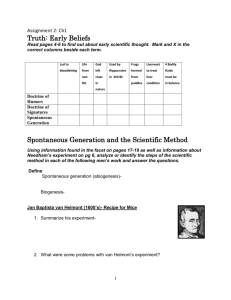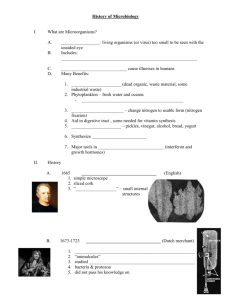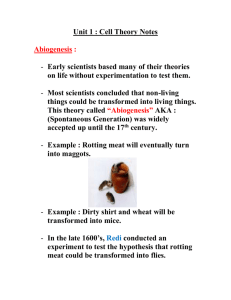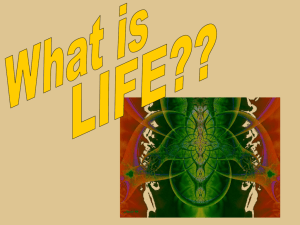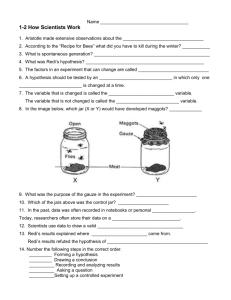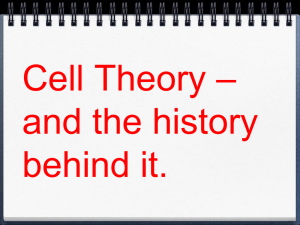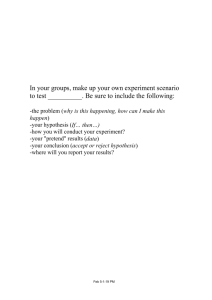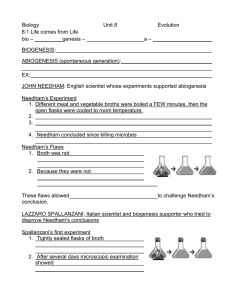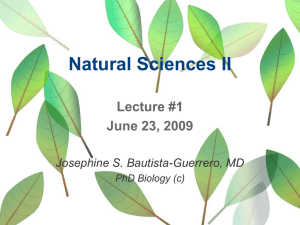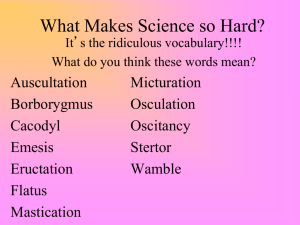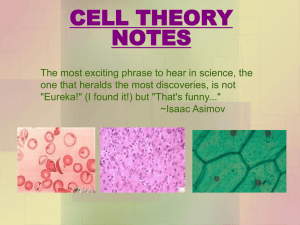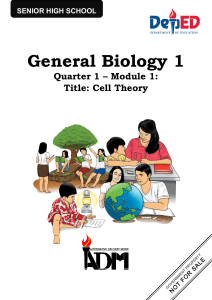Biology 2201
advertisement
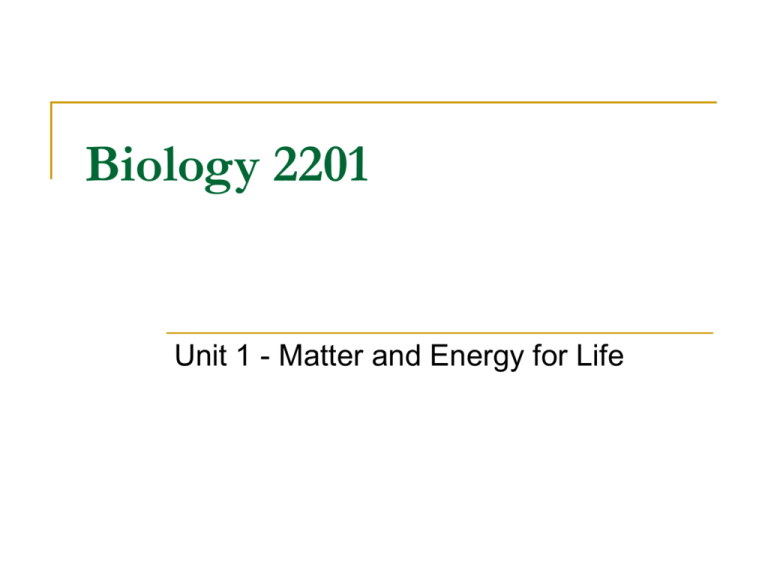
Biology 2201 Unit 1 - Matter and Energy for Life Biology is the study of Life What does this mean, “Life” or “Living”? The Cell The cell is the basic unit of life in which all living things are composed of one or more. The cell is the smallest unit capable of displaying the characteristics of life. These two ideas are central to the Cell Theory. It may be suprising that although the cell is of great importance to life, it was only discovered quite recently in human history. Some 300 years ago. The Cell Theory The cell theory is formulated from four main hypothesis. 1. All living organisms are composed of one or more cells 2. Cells are the basic units of structure and function in all organisms. 3. All cells are derived from pre-existing cells. 4. In a multicellular organism, the activity of the entire organism depends on the total activity of its independent cells. The cell theory was first stated in 1858. Early Cell Biologists For Centuries Scientific knowledge was based on simple observations instead following the scientific method. (World was flat, earth was center of universe, etc...) One such idea, since the time of Aristotle, was that living things could arise from mud, dust, water. This idea was referred to as Spontaneous Generation was renamed Abiogenesis in 1870 by the British scientist Thomas Huxley Opposite to this thought were those that believed in Biogenesis. That life could only originate from life. Paradigm Shift Aristotle, the Greek philosopher (384-322 B.C.E.) Seeks answers to questions through observation and thought and not through experimentation. 1590's Dutch eyeglass makers create the first compound microscope by lining up two lenses. 1600's debates rage over the nature of reproduction. Most still believe in Abiogenesis, but one British physician held strong beliefs that life only came from life. 1665 - an English scientist Robert Hooke published, ‘Micrographia’. The first book to show sketchings of once living objects through a microscope. He saw little roomlike compartments that he called “cells”. 1666-67 - Dutch, Antony van Leeuwenhoek read Hooke’s book and designed his own microscope with magnification unlike any that had been created. 1668 - Italian, Francesco Redi conducts one of the first controlled scientific experiements to disprove the Abiogenesis theory. Redi’s Experiment Redi placed rotting meat in two separate jars. The control group was left alone with no cover. The experimental group was sealed with a cloth over the top. Over time the control group jar filled with maggots and flies and the experimental jar was free of all insects. This validated his hypothesis that flies arise from other flies. Leeuwenhoek Discoveries 1673 - Leeuwenhoek begins writing letters to the Royal Society that continued for 50 years. In one letter he reports observing tiny ‘animalcules’ in standing water. 1683 - Leeuwenhoek examines the plaque from his wifes and daughters teeth and observed, “many very little things prettily amoving.” This was the first observation of bacteria. Needham vs Spallanzani Case of the Mystery Meat 1748 - an English naturalist and priest, John Needham designs an experiment to support Spontaneous generation. Needham brings meat broth to a boil for a short time to sterilize it. He then pours broth into two jars. One jar is left open the other is sealed. Within days both jars were filled with microorganisms. Spallanzani’s reply Lazzaro Spallanzani is skeptical of Needham’s results so follows Needham’s procedure, but boils the broth for a longer period of time. No microorganisms appear in the sealed jar. Supporters of Spontaneous generation argued that too much boiling killed some ‘vital principal’ needed for life to arise. Paradigm cont. 1830 - biology is evolving into a major body of knowledge and microscopes are improving 1831- Scotish scientist Robert Brown identifies the cell nucleus. 1838-39 Schleiden and Schwann make the statements, “all plants are made of cells” and “all animals are made of cells” respectively. 1845 - Henrich Braun writes, “The cell is the basic unit of life.” 1856 - English chemistry student William Henry Perkin develops an intense purple dye that can stain slide specimens. 1858 - German physiologist Rudolph Virchow writes, “Cells are the last link in a great chain ...tissues, organs, systems, and individuals... Where a cell arives from a preexisting cell. 1860 - French biologist Louis Pasteur ends the debate with a scientific experiment to disprove spontaneous generation. Pasteur’s swam neck flask finally showed that micro-organisms came from other micro-organisms in the air and water, and not by spontaneous generation.
